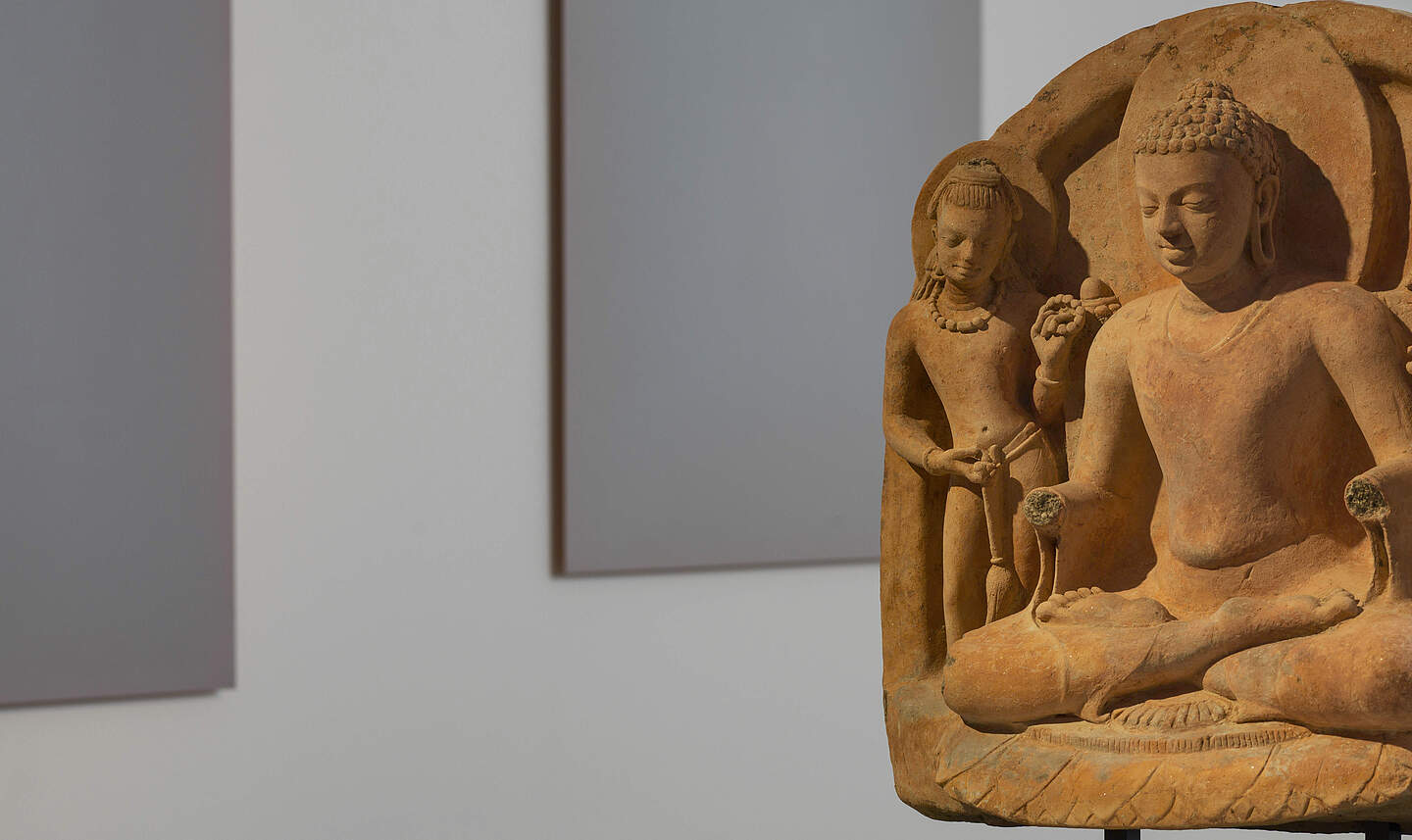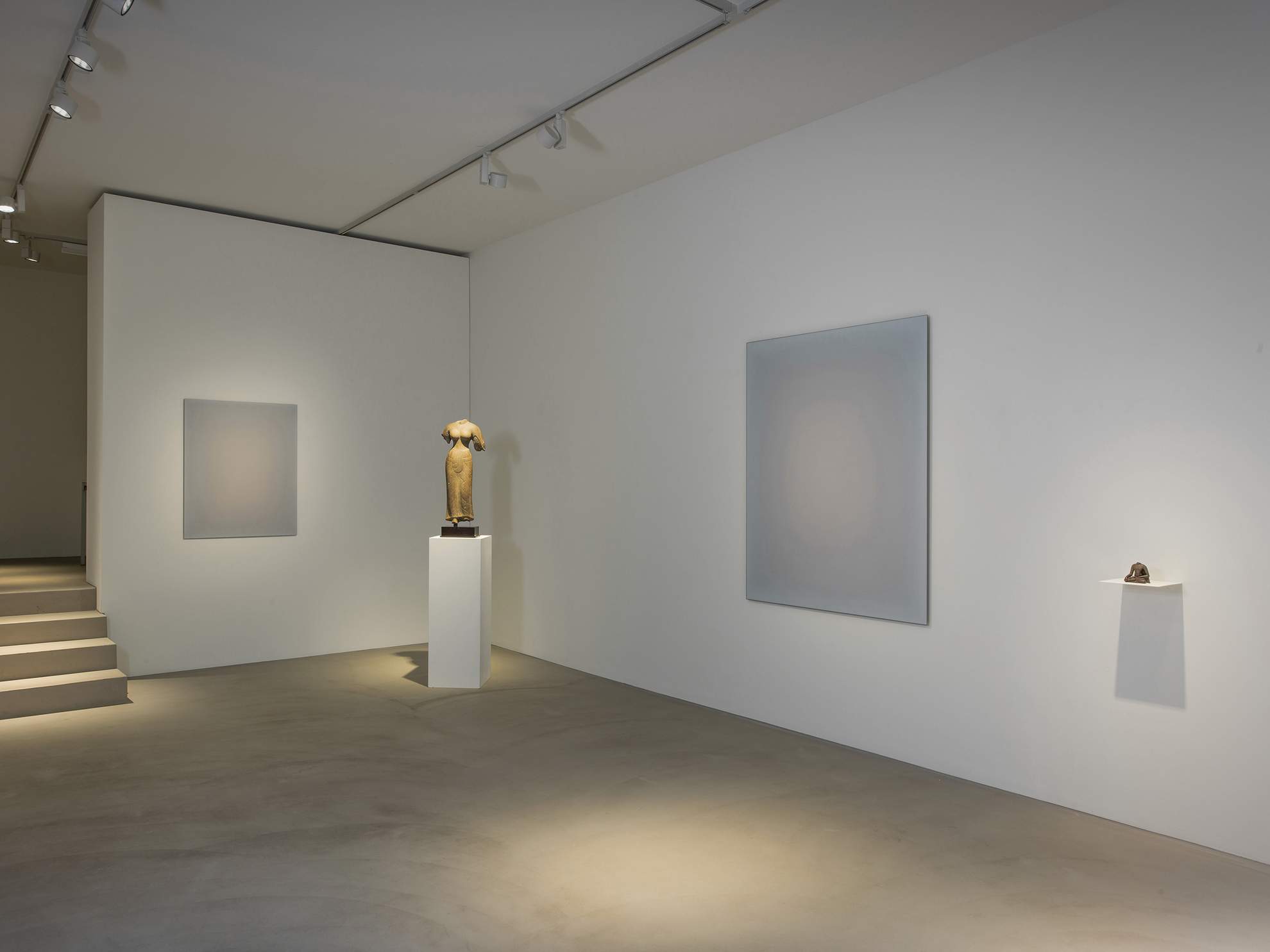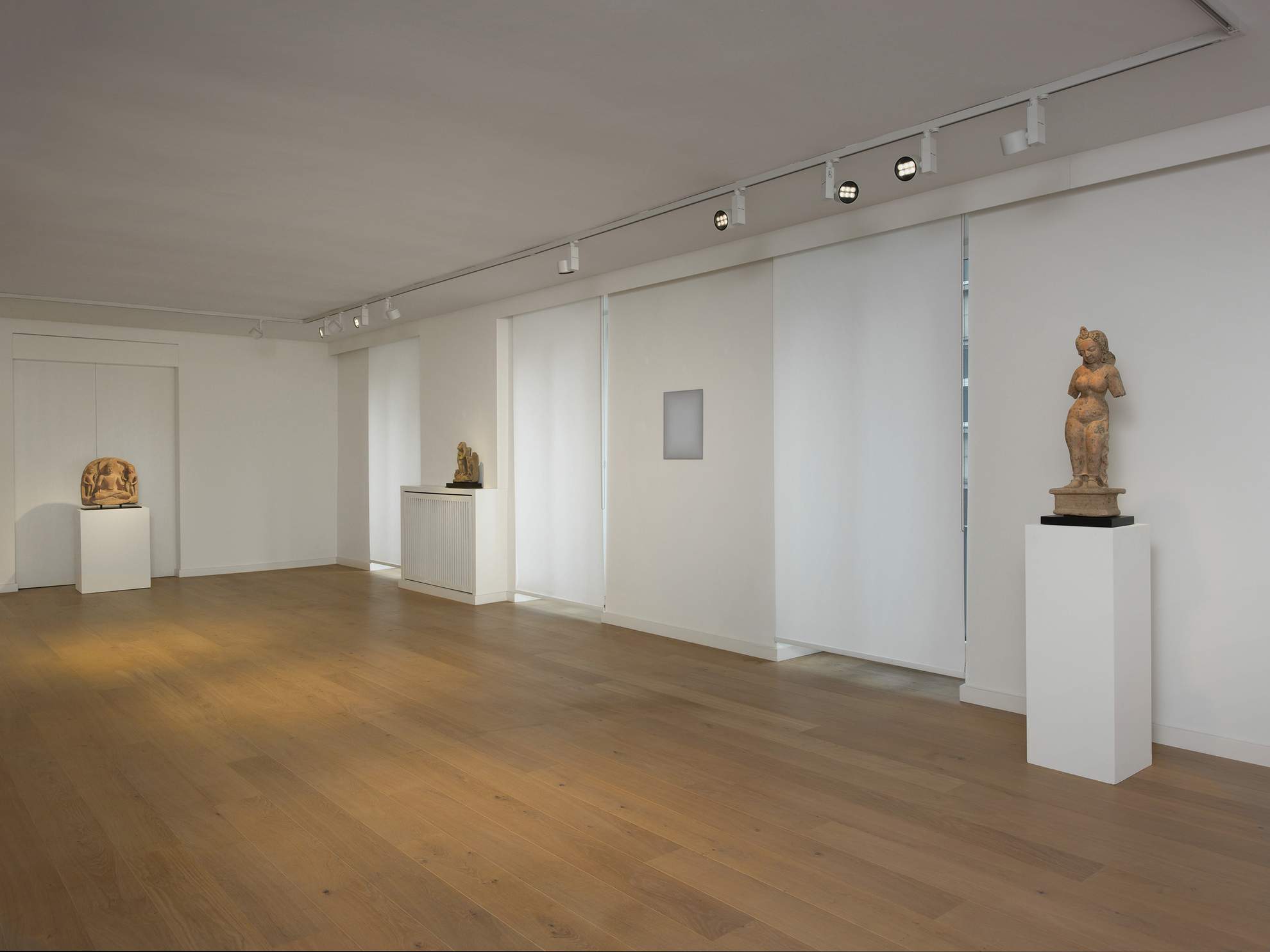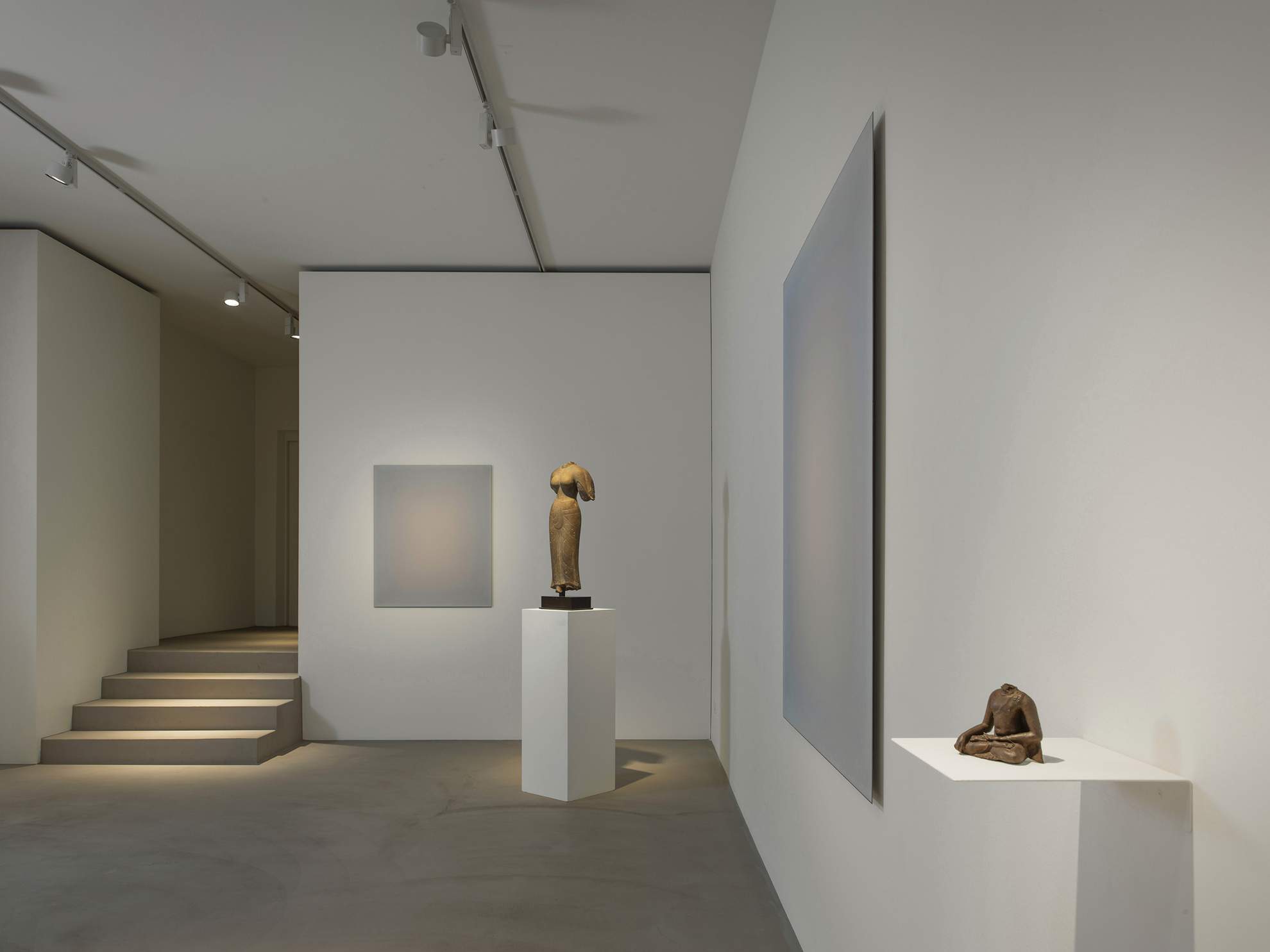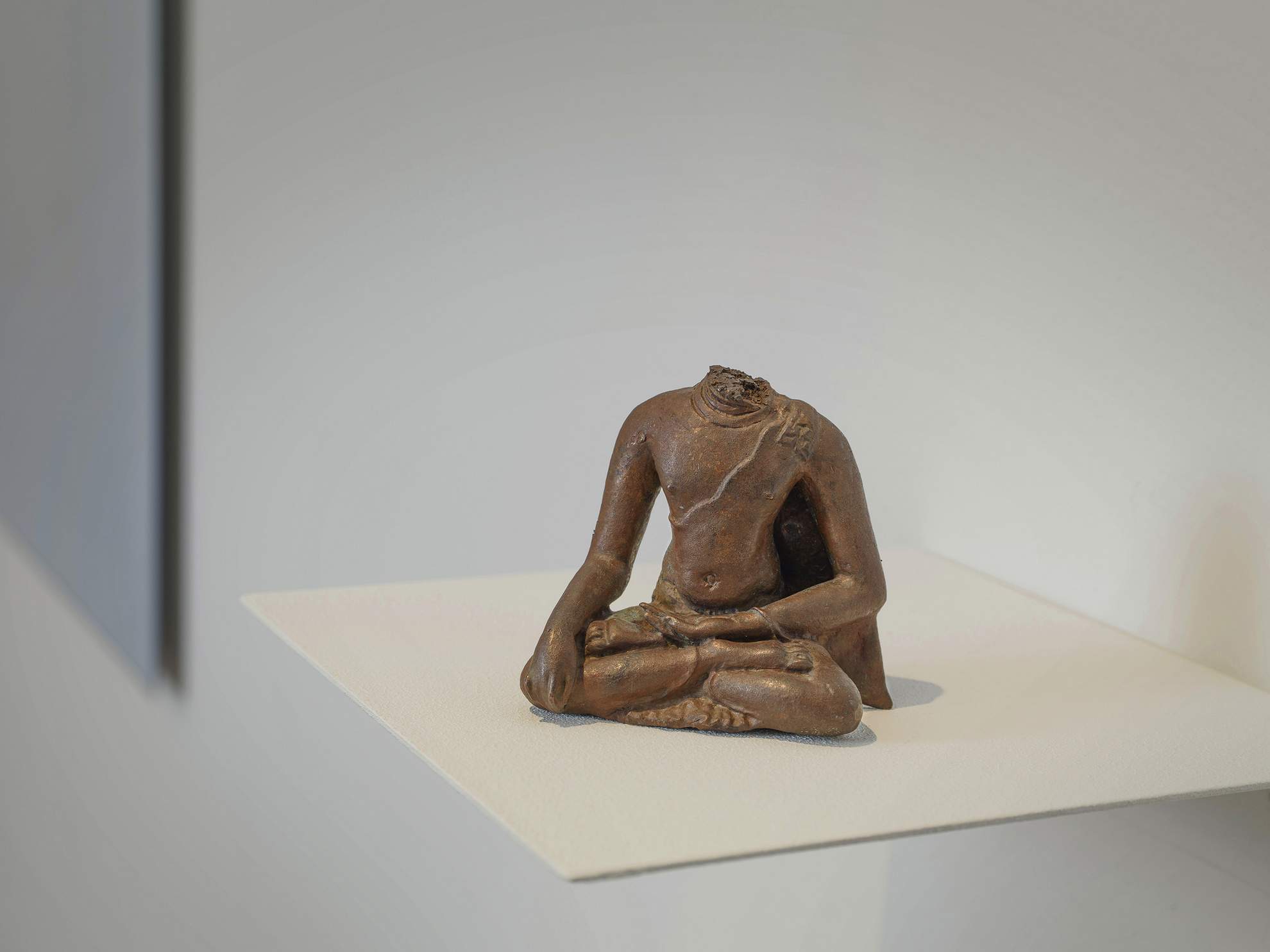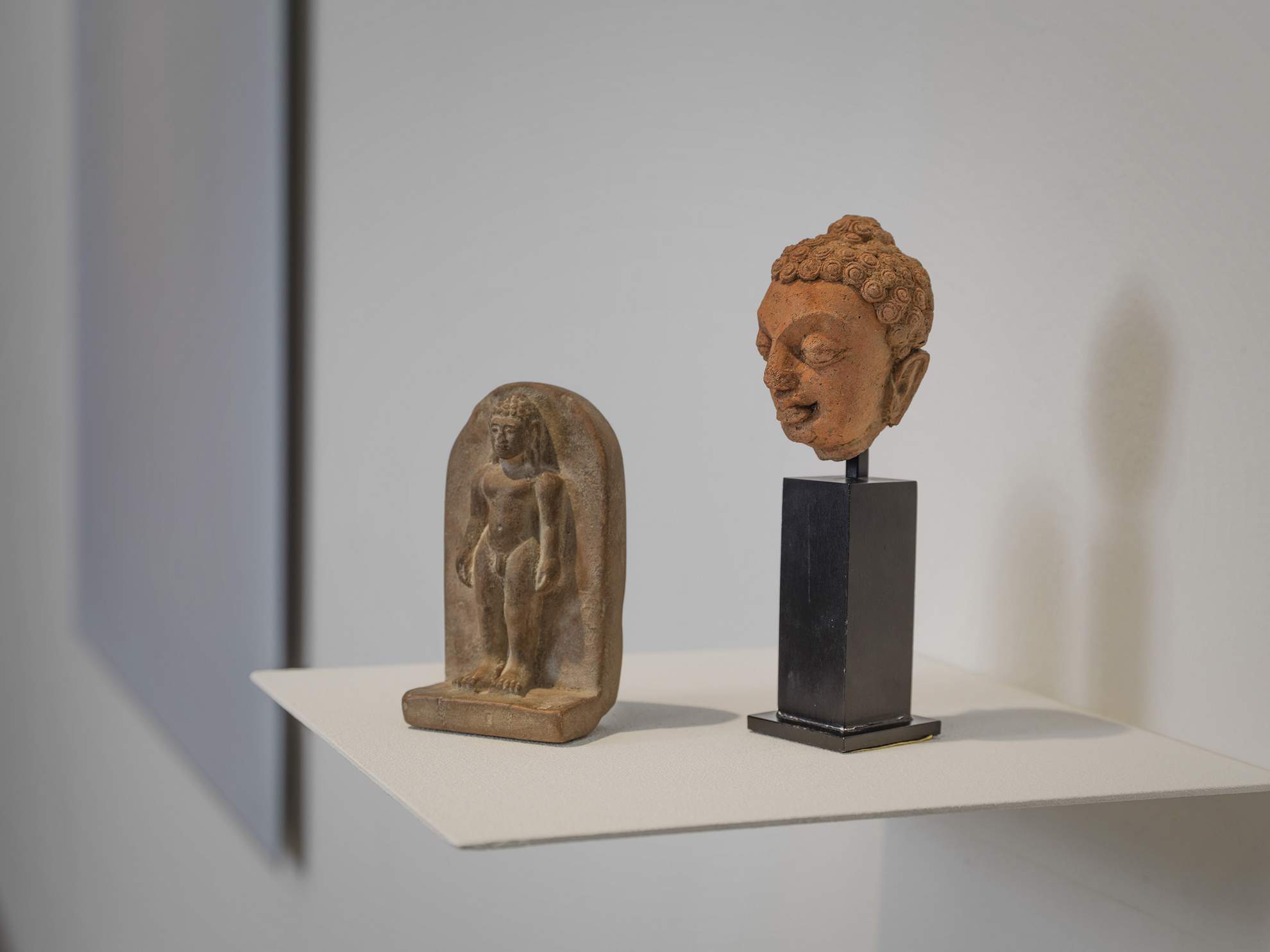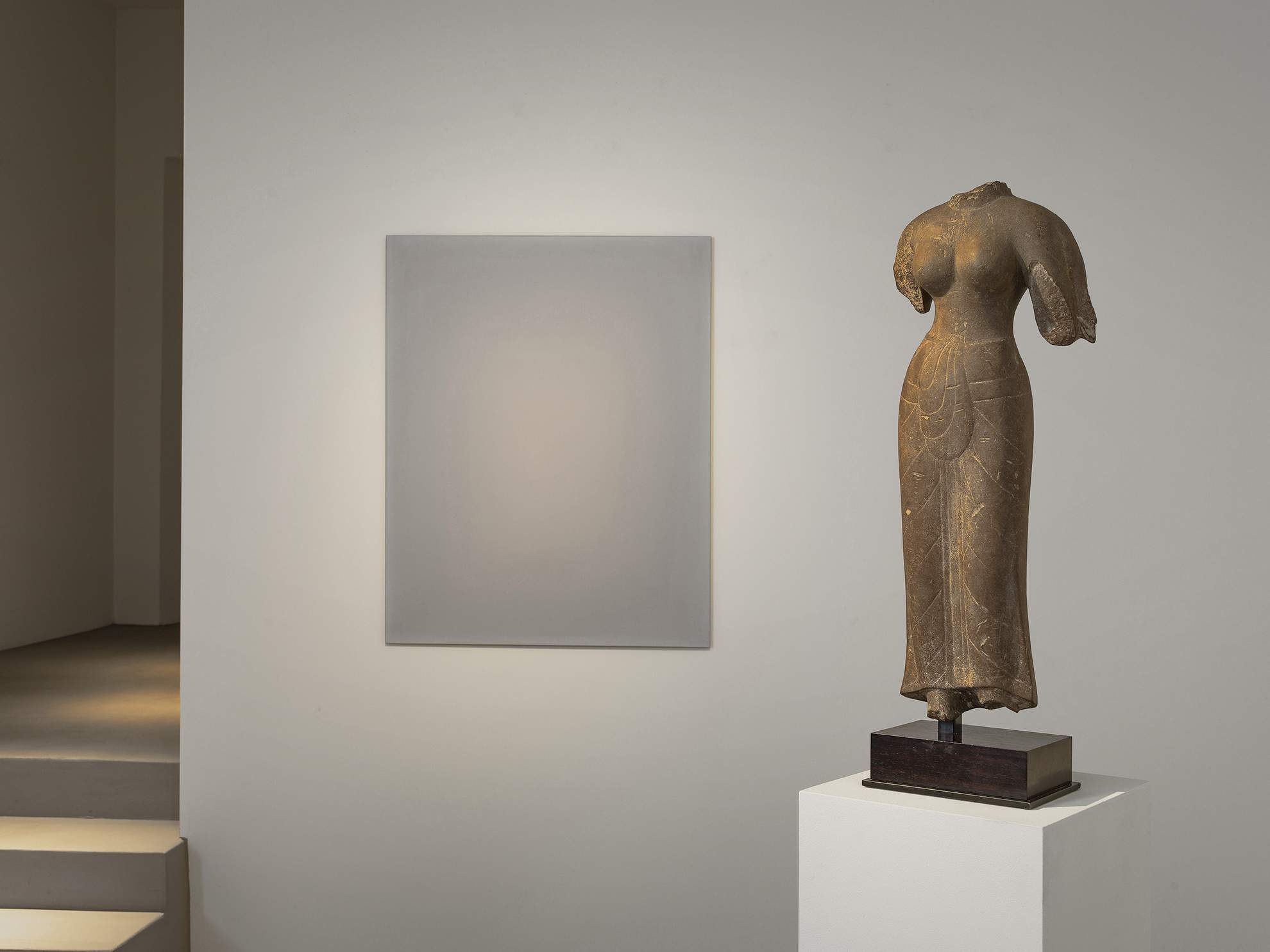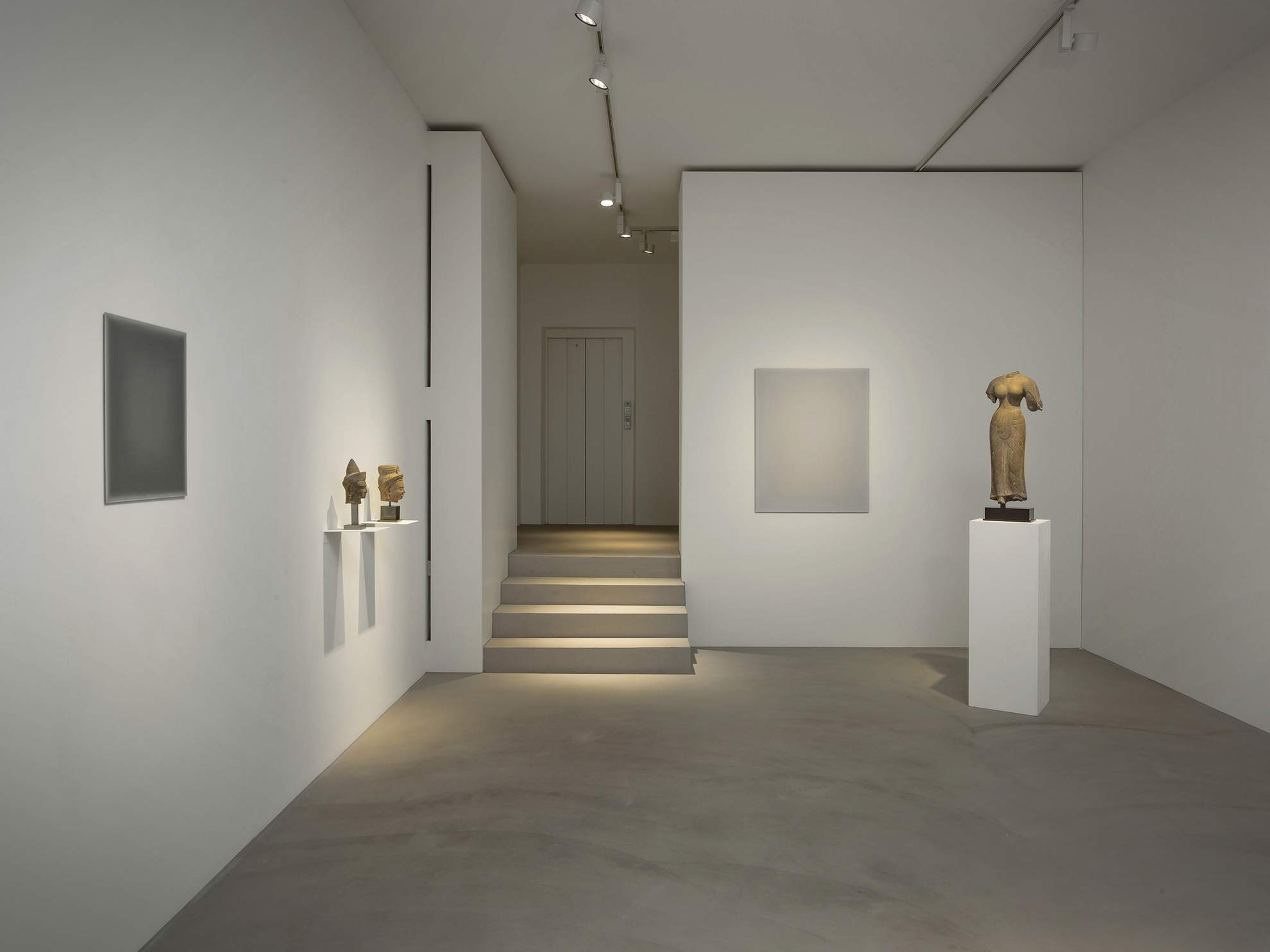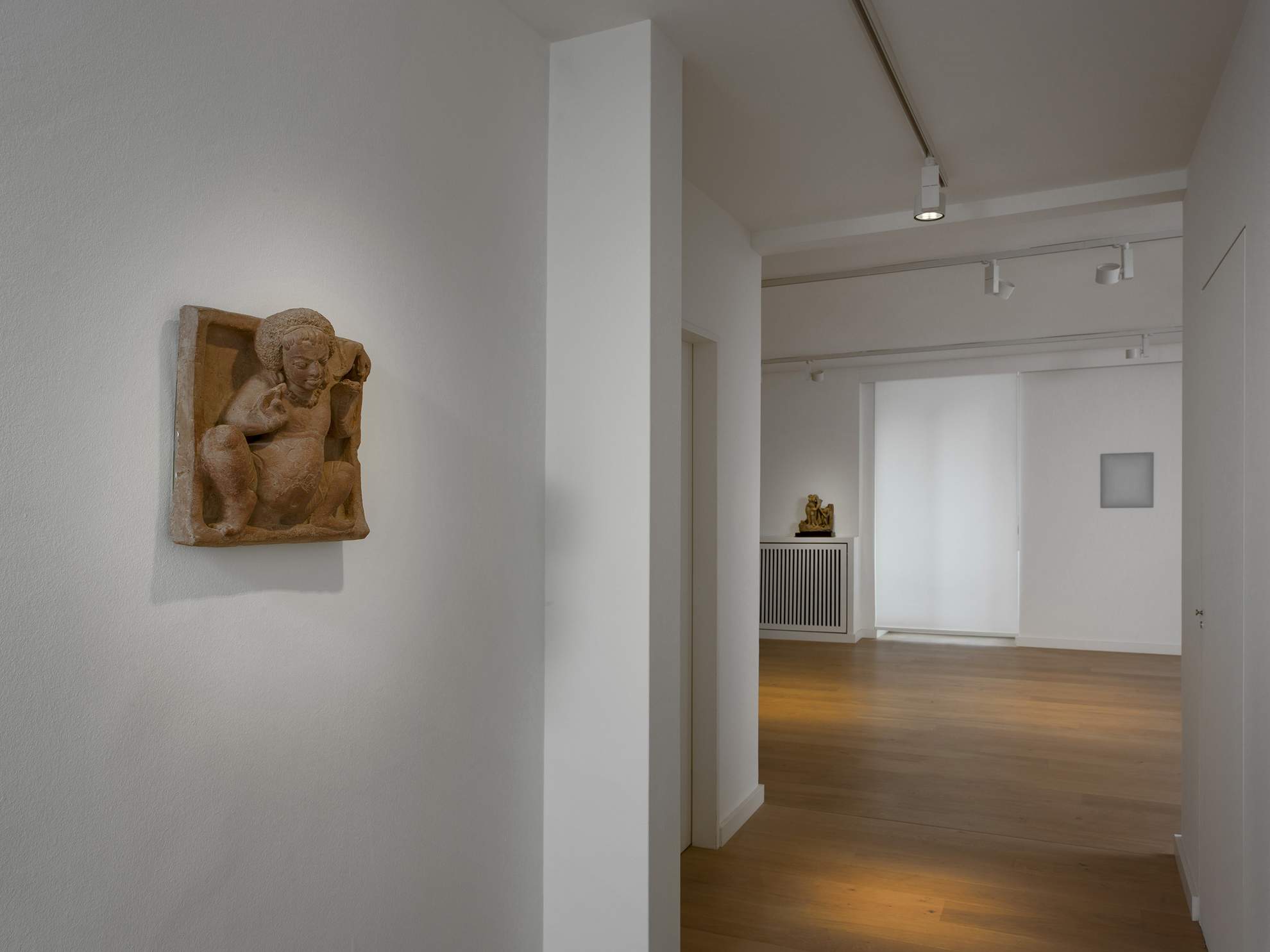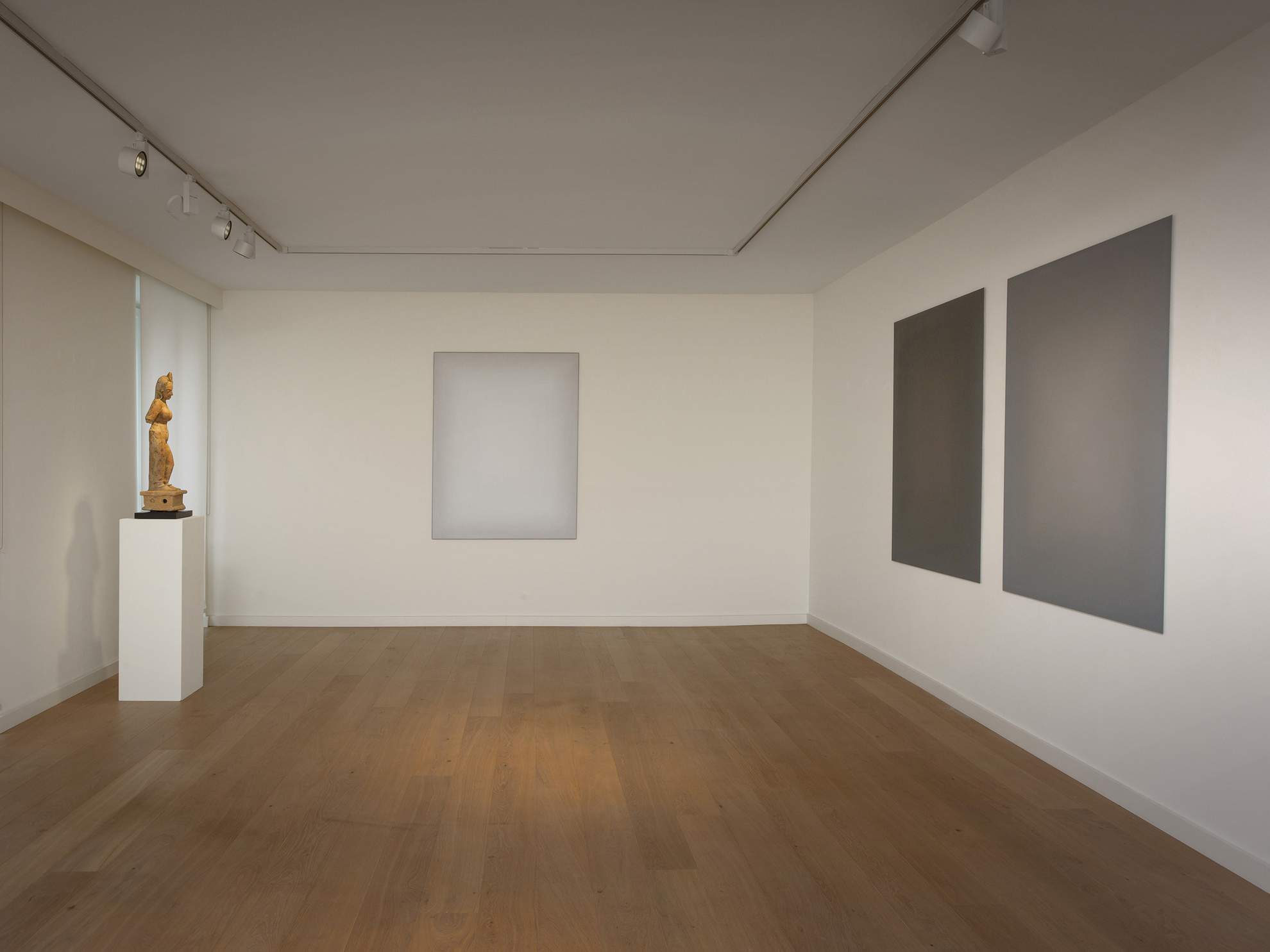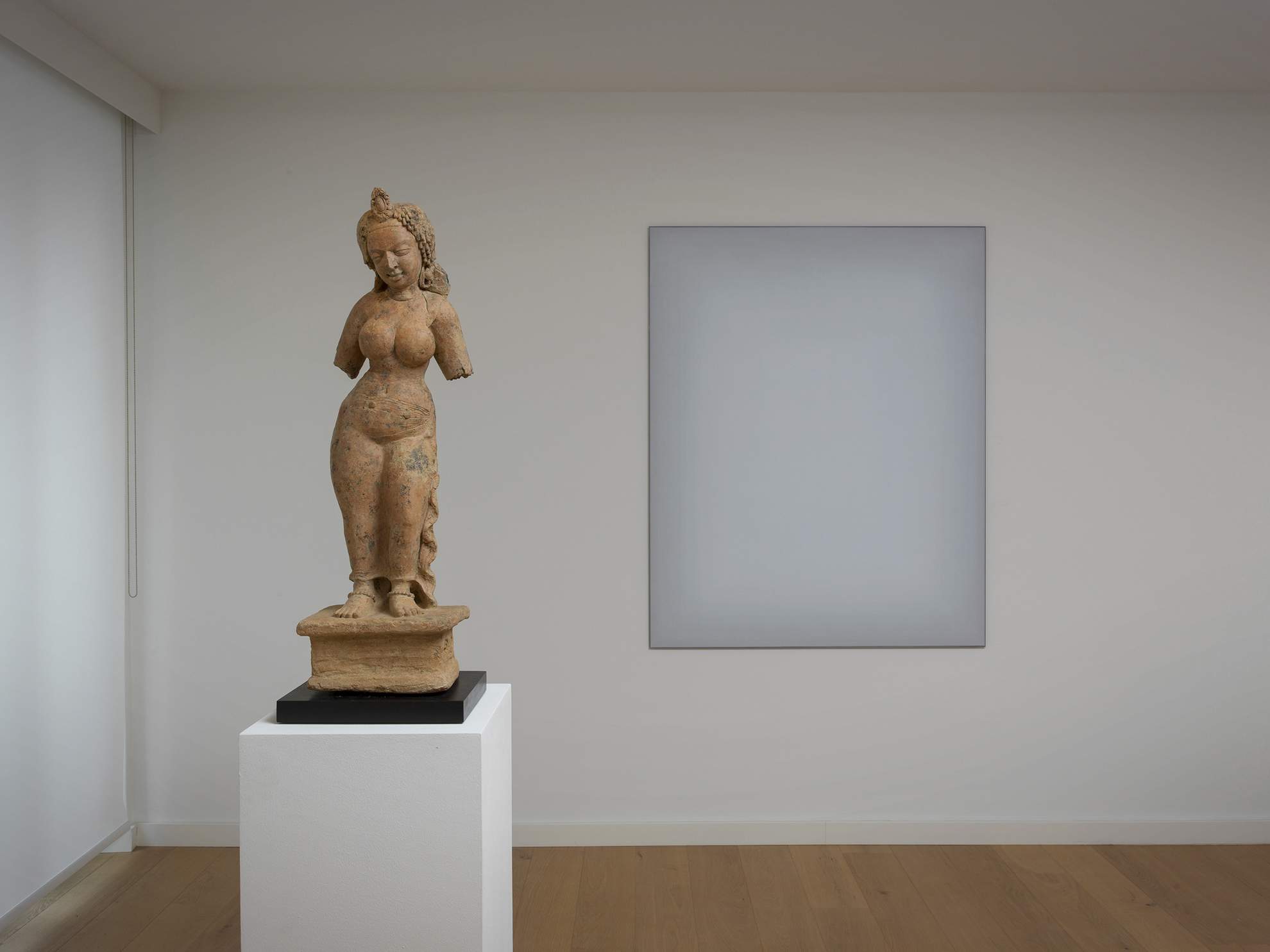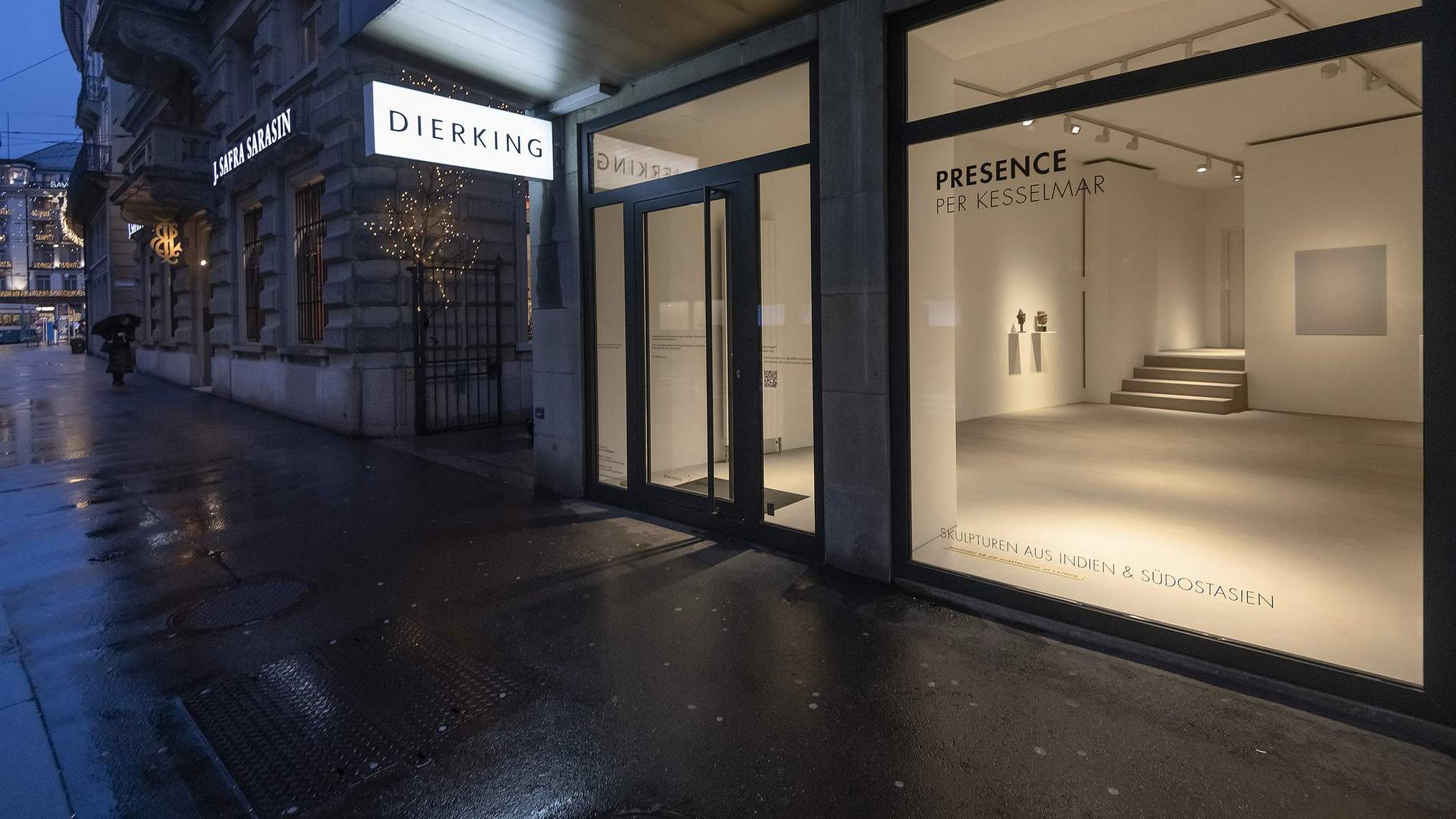
Presence
Per Kesselmar & Sculptures from India and Southeast Asia
-
Emptiness and form – both concepts that can represent the artworks of the Swedish artist Per Kesselmar and the Asian sculptures. They differ in form, materiality and their original purpose; what they have in common, however, is their presence.
...form does not differ from emptiness,
emptiness does not differ from form.
Form itself is emptiness, emptiness itself is form.
From The Heart Sutra
In the exhibition on two floors on the Paradeplatz in Zurich, sculptures from India and South-East Asia are juxtaposed with new works by Per Kesselmar.
Their shared attribute lies in the power that arises from the presence of both types of work. Per Kesselmar creates colour spaces using countless layers of paint on different metal surfaces which, despite their two-dimensionality, can scarcely be surpassed in depth. The reduction to pure colour and the very absence of any structure lends the works a meditative calm and at the same time an inescapable presence. The material of the painting support determines the warmth or coldness of the picture, which is not easily perceptible to the eye – the surface seems to vibrate, here and there one has the impression of perceiving a concave or convex form, before it blurs again and the undefined power once more exerts its pull.
"Despite the ravenous hunger for seeing, the gaze inevitably slips between shimmering light and vibrating shadows. What we have here is all and nothing - only perception's endless adventure."
Joanna Persman, in: Per Kesselmar. Eva Lange, Galleri Hammaren, Gothenburg, 2021, p. 15.
Meditative calm and presence are also attributes of the sensitively designed terracotta sculptures from the Gupta Empire of India, whether a meditating Buddha or the 5th/6th-century Devi swaying her hips seductively. The simple elegance of the pre-Angkorian torso of a goddess – a contemporaneous sculpture of this extremely rare type can be found in Zurich's Rietberg Museum – seems to virtually float away from the depths of the painting.
In contrast to Kesselmar's painting, the sculptures come alive through their formal vocabulary. Thus the self-contained smile of a Khmer head with its meditative aura touches the viewer just as much as the painter's timeless and placeless colour spaces, which immerse him in a tranquil world far beyond all hectic activity.
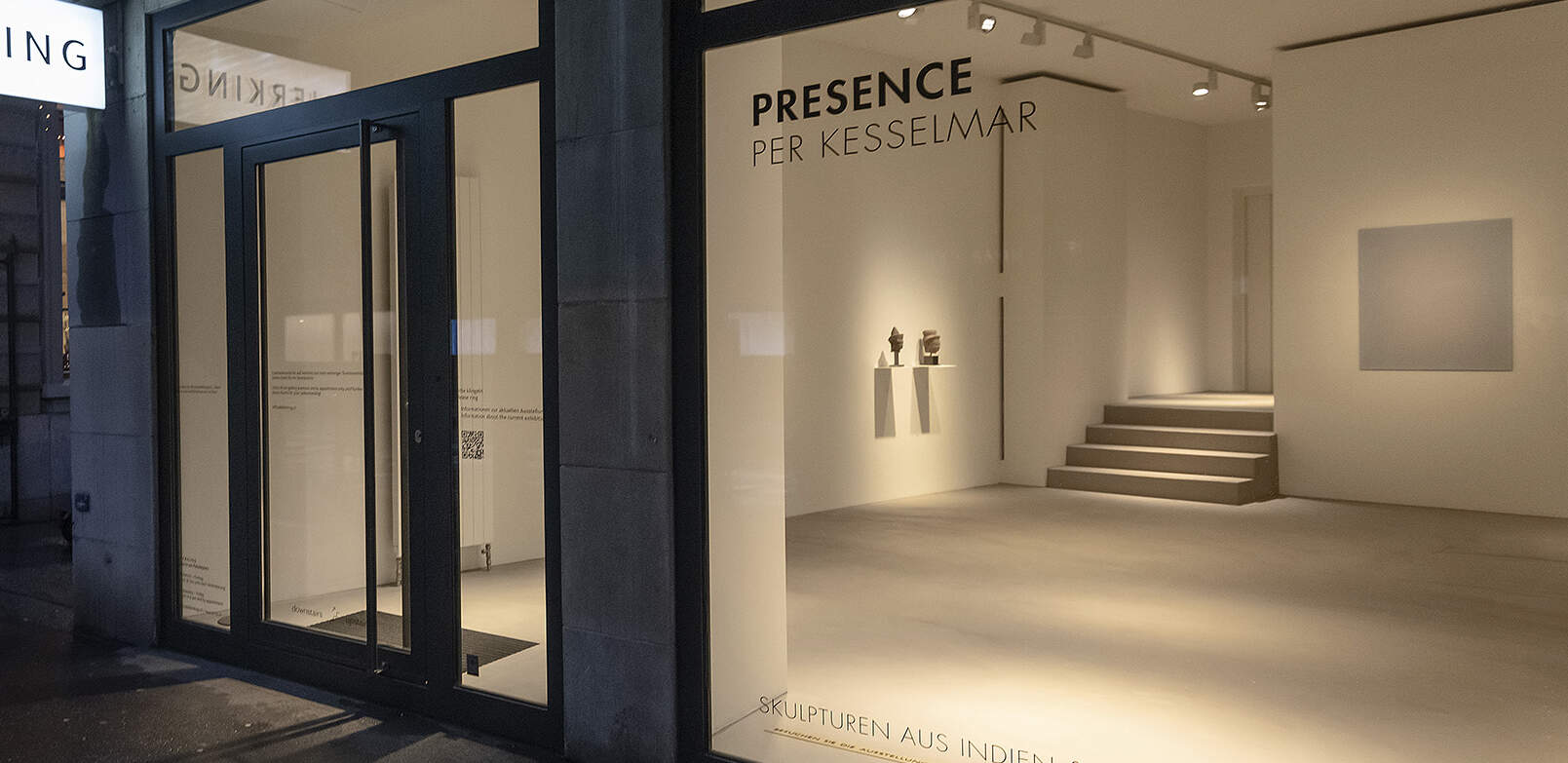
Presence
Per Kesselmar & Sculptures from India and Southeast Asia
-
...form does not differ from emptiness,
emptiness does not differ from form.
Form itself is emptiness, emptiness itself is form.
From The Heart Sutra
Emptiness and form – both concepts that can represent the artworks of the Swedish artist Per Kesselmar and the Asian sculptures. They differ in form, materiality and their original purpose; what they have in common, however, is their presence.
In the exhibition on two floors on the Paradeplatz in Zurich, sculptures from India and South-East Asia are juxtaposed with new works by Per Kesselmar.
Their shared attribute lies in the power that arises from the presence of both types of work. Per Kesselmar creates colour spaces using countless layers of paint on different metal surfaces which, despite their two-dimensionality, can scarcely be surpassed in depth. The reduction to pure colour and the very absence of any structure lends the works a meditative calm and at the same time an inescapable presence. The material of the painting support determines the warmth or coldness of the picture, which is not easily perceptible to the eye – the surface seems to vibrate, here and there one has the impression of perceiving a concave or convex form, before it blurs again and the undefined power once more exerts its pull.
"Despite the ravenous hunger for seeing, the gaze inevitably slips between shimmering light and vibrating shadows. What we have here is all and nothing - only perception's endless adventure."
Joanna Persman, in: Per Kesselmar. Eva Lange, Galleri Hammaren, Gothenburg, 2021, p. 15.
Meditative calm and presence are also attributes of the sensitively designed terracotta sculptures from the Gupta Empire of India, whether a meditating Buddha or the 5th/6th-century Devi swaying her hips seductively. The simple elegance of the pre-Angkorian torso of a goddess – a contemporaneous sculpture of this extremely rare type can be found in Zurich's Rietberg Museum – seems to virtually float away from the depths of the painting.
In contrast to Kesselmar's painting, the sculptures come alive through their formal vocabulary. Thus the self-contained smile of a Khmer head with its meditative aura touches the viewer just as much as the painter's timeless and placeless colour spaces, which immerse him in a tranquil world far beyond all hectic activity.
IMPRINT
© DIERKING 2025
